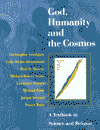The ‘Anthropic Coincidences’Modern cosmology offers us mathematical models of the possible large-scale structure of the universe. Like any other mathematical model, the actual features depend on the numbers that we choose to put in the equations. Different values of the total mass of the universe will give rise to very different cosmological models. In general, the overall structure of many physical systems is strongly influenced by the numerical values of a relatively small number of universal constants (e.g., the gravitational constant), Over the past couple of decades physicists have become increasingly aware that the physical conditions that enable life to exist are very sensitive to the values of a number of these constants. If they had been only slightly different, life as we know it could not have evolved. Moreover, the overall chemical composition of the universe was determined by physical conditions during the first seconds of the Big Bang. The elements on which life depends such as carbon, nitrogen, oxygen, sulphur and iron are the product of nuclear reactions within stars. In both situations the processes by which the chemical elements are formed are governed very precisely by the strengths of four fundamental physical interactions: gravitation, electromagnetism, and the weak and strong nuclear interactions. If the relative strengths of these forces were different, the resultant universe would also be different. For example, increasing the strong nuclear interaction by 3% relative to the electromagnetic interaction gives a cosmological model in which none of the known chemical elements could form. Conversely, decreasing it by 1% gives a model in which carbon atoms would be unstable. Both scenarios would preclude carbon-based life. Other tiny variations in these forces might have given rise to a universe which was 100% helium or one in which supernova explosions could not occur (since these explosions are thought to be the chief way in which the chemicals necessary for life are ejected from stars, this too would preclude the evolution of life). These ‘precisions’ in various parameters such as to give rise to life are known as the ‘anthropic coincidences’. There is no obvious physical reason why these parameters should have the observed values. However, very small changes in any of these key parameters would have resulted in a grossly different universe; one in which life as we know it would almost certainly be precluded. The set of life-permitting cosmological models is a vanishingly small subset of the set of all theoretically possible cosmological models.
See the Weak Anthropic Principle, Anthropic Design Arguments, Many-Universes Models, and The Strong Anthropic Principle - also the remarkable uniformity of the universe.
Email
link | Feedback |
Contributed by: Dr. Christopher Southgate |




